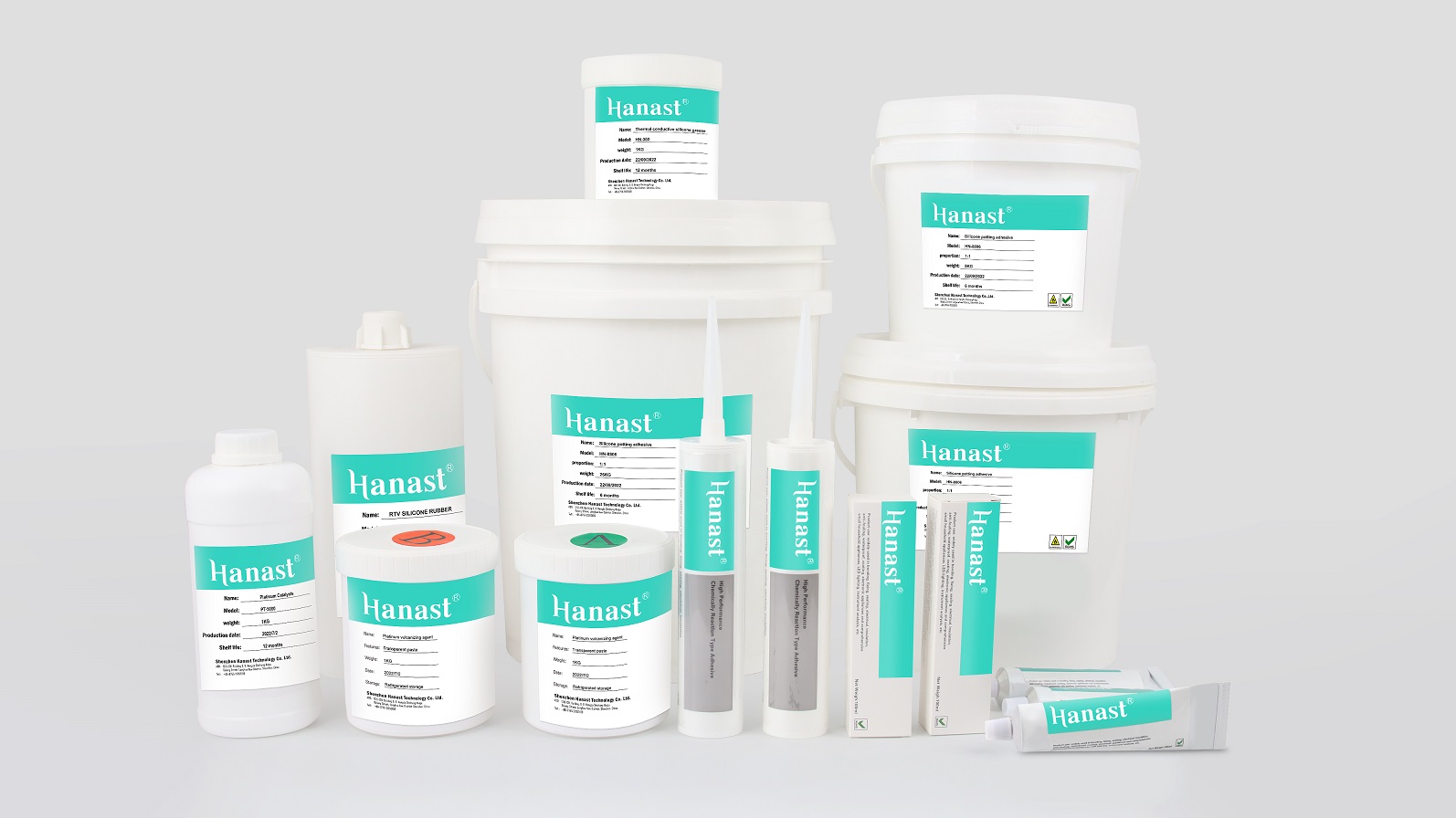The difference between Addition-Type Potting Compound and Condensation Potting Compound
 Apr 12,2023
Apr 12,2023

 Hanast
Hanast
1. Classification
According to the curing reaction, silicone potting compound can be divided into Addition-Type and Condensation Type.
According to our products,
- The condensation type is 10:1, potting compound + curing agent,
- And the addition type is 1:1, potting compound + additives.
2. Features
In general, Condensation Potting Compound (10:1) is used for waterproofing, and the Addition-Type Potting Compound (1:1) is generally used for heat-conduction potting.
- Condensation Potting Compound (10:1) shrinks severely, releases a certain amount of alcohol at the same time, and the curing time is longer.
- However, Addition-Type Potting Compound (1:1) is more environmentally friendly. It can be used for food-grade products and can be heated and cured at room temperature.
3. Solidification Principle
- Condensation Potting Compound (10:1) is a silicone rubber that is cured by moisture in the air and a mixed curing agent. The curing time mainly depends on the amount of curing agent used, the more the curing agent is used, the faster the curing speed will be. However, it shrinks and releases by-products during curing.
- Addition-Type Potting Compound (1:1) is cured with a curing agent, and no by-products are produced during the curing process. Once the curing agent is added, they will complete their own curing, even in a closed container, which does not need to be open to the atmosphere. Two-component Silicone Potting Compound (1:1) can be cured at room temperature, if necessary, it can also be heated to speed up the curing speed and will not have any adverse effects on the cured colloid. (One-part addition silicones usually require heat curing.)
Addition-Type Potting Compound (1:1) also requires a good chemical balance to achieve the proper physical properties of the cured colloid. Therefore, both components should be thoroughly mixed before being weighed out. At the same time, the correct mixing ratio is also very important. Since it is usually produced as a set, it is not recommended to mix two different batches of rubber. At the same time, it should be noted that the uncured compound should avoid contact with the following chemicals during the mixing process or production process: nitrogen, sulfur, phosphorus, arsenic, organic tin curing agent, stabilizer, epoxy resin curing agent, vulcanized rubber and condensation type silicone, otherwise, it will inhibit curing and cause incomplete curing.
4. Advantages of Addition-Type Potting Compound (1:1)
Compared with the traditional condensation-type potting silicone rubber, the addition-type silicone potting rubber has no by-products of small molecules in the curing process, the cross-linking structure is easy to control, the shrinkage rate of the vulcanized product is small, and the production process performance is superior. It can be vulcanized under high temperatures and can be vulcanized under heating conditions, and can be vulcanized quickly in deep layers. The product has good processing performance, low viscosity, good fluidity, can be poured, and can be used for pumping and static mixing. It has the advantages of simplified, fast, high-efficiency and energy-saving processes.
Addition-Type Potting Compound (1:1) has always been a difficult problem for potting and waterproofing, and it is relatively easy to be poisoned (glue does not cure Or slow curing), the curing agent is very easy to react with compounds such as S, P, N, etc. However, the advantages of the addition type potting glue are too obvious, the colloid has good strength, no corrosion, no shrinkage, and good electrical insulation performance.




 Home
Home
 Characteristics and Applications of Mold Silicone
Characteristics and Applications of Mold Silicone  You May Also Like
You May Also Like







 Tel
Tel
 Email
Email
 Address
Address












